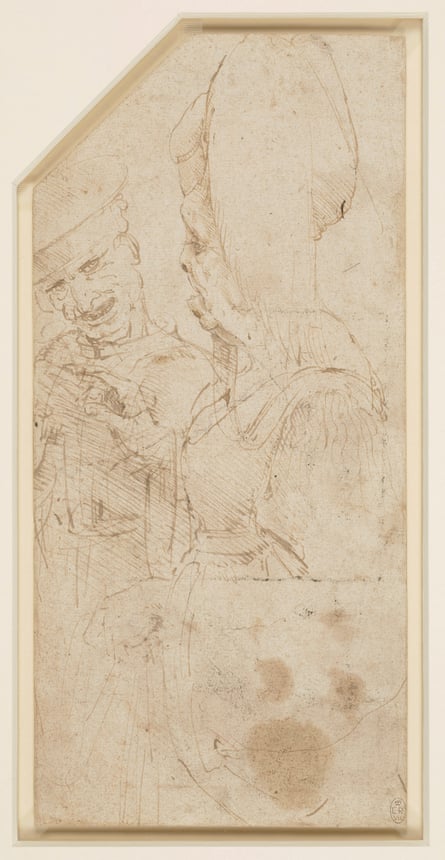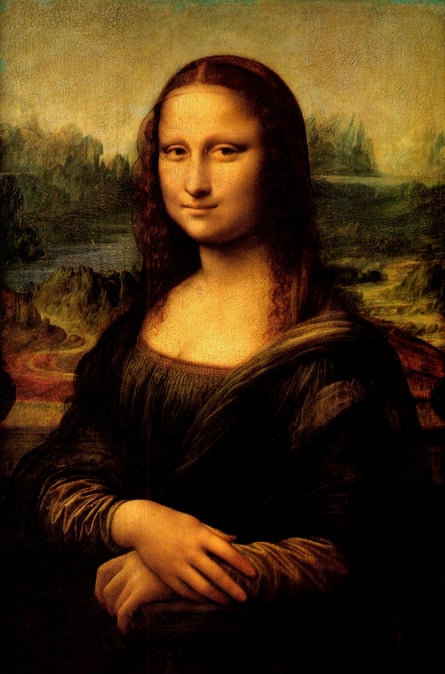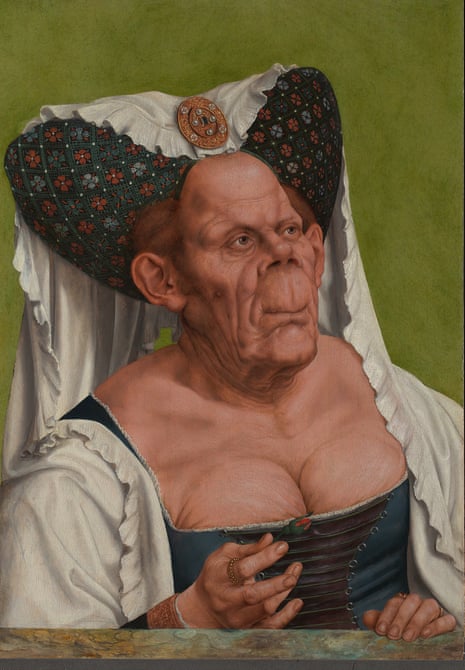Leonardo da Vinci comments in his notebooks that while few are trained in judging portraits, everyone feels entitled to criticise actual people: “whether someone is a hunchback (gobbo), or has one shoulder higher or lower than the other, or too big a mouth or nose, or other defects.” It’s a telling remark, but at first sight some of his most disturbing drawings suggest he shared those prejudices against people who look different.
We think of him painting the beautiful: Ginevra de’ Benci, Cecilia Gallerani and Salai glow with glossy hair and good bone structure. Yet alongside his fascination with youth and loveliness Leonardo was obsessed with irregular, diseased and aged faces whose “monstrous” distortions he drew with daunting precision.

Leonardo’s caricatures, as they got called in the 18th century, are some of his most mind-bending and shockingly modern drawings. Renaissance art is often assumed to be orderly and reassuring but these faces anticipate the anxiety of Munch and the horror of Francis Bacon.
Their hypnotic power can be glimpsed in a new exhibition at the National Gallery in London, The Ugly Duchess: Beauty and Satire in the Renaissance. An Old Woman by Quinten Massys is nicknamed The Ugly Duchess because it inspired a John Tenniel illustration in Alice’s Adventures in Wonderland. Massys, working in Antwerp in 1513, depicts a face that’s a chaos of skeletal deformities under the skin, massive structural distortions that stretch the woman’s upper lip, hollow her cheeks and inflate her forehead. Yet she is dressed to impress, including bulbous headgear that heightens her unusual features. Is she proud of them? In fact she appears to be selling herself on her looks, for she holds a flower, often an advert for sex work in Renaissance art. The painting is being shown with its pendant – an accompanying painting – which depicts an old man whose attentions she solicits.
Yet this painting is not what it seems. Massys isn’t creating his own surreal satire. He’s not even the true author of this image. It is in fact a careful copy of a lost caricature by Leonardo da Vinci. A red chalk sketch by Leonardo’s pupil Francesco Melzi, which the National Gallery is showing beside the painting, reproduces the same vanished drawing: Melzi was a faithful student and his copy is surely reliable. So Leonardo designed this unique person, even to the wrinkled bosom emerging from her dress. All Massys did was enlarge her in oils.
This painting is a window on the startling strand of outrageous, “abnormal” faces that Leonardo drew. Another of his caricatures in the show depicts an aged man and woman in their finery, greeting each other flirtatiously: he has the face of a mummified corpse and she barely has a nose. Could that be a result of syphilis? In another of Leonardo’s disconcerting drawings, a man with his back to us, caught in profile, has a mouth that sticks out like a donkey’s, a thick turkey neck, a nose that looks stitched on and, above these dislocated features, a spiral in his matted hair like a whirlpool, as if it were a well sunk in his brain. Then there are multiple old men with chins jutting far out of their faces, noses driven down into mouths or pressed upward piggishly.

What are these drawings? Are they just cruel jokes? Both Leonardo and his pupil Melzi, who copied his caricatures, were reputedly very good-looking. A portrait by Melzi of his teacher as an old man confirms the claim of the 16th-century writer Vasari that Leonardo possessed “beauty of body”. Vasari also says Melzi, whom he met face to face, “was a very beautiful boy”. So perhaps it’s possible to picture these two perfect specimens in Leonardo’s chateau in Amboise during his last years, laughing over drawings of ugly people.
Yet that doesn’t really evoke the mood of these drawings. They are not really funny, for one thing. They have a despairing, even scary, power. And if Leonardo sometimes appears revolted by old people pretending to be young lovers, other caricatures are tragic and compassionate. The man with a mad whirlpool in his hair, looking at the world from a bulging eye, is a figure of loneliness and isolation: Leonardo feels for him. Even identifies with him. Far from cruel mockery, this is a sympathetic study of an outsider.
It also appears to be a drawing from life. Leonardo sees the man from behind, as if sketching him surreptitiously. It seems very likely this portrait was worked up from a sketch he did in the street. He advised artists to always carry a notebook to draw people around town, “quarrelling or laughing or fighting”. So are his caricatures actually observations of real people? He certainly took note of outlandish faces on the piazza, because in another note recommending sketching strangers, he adds: “Of monstrous faces I shall say nothing because they naturally stay in the mind.” He even had daydreams about such faces. If you stare long enough at the stains and cracks in a wall, he suggests, you will start to see things including “all kinds of strange faces”.
One amazing note reveals how far he’d go to feed his fascination. Amid observations on The Last Supper he records: “Giovannina, fantastical face (viso fantastico); lives at Santa Caterina at the hospital.”
The word he uses for her face, fantastico, is the closest we get to knowing what Leonardo himself called these drawings. The term “fantastic or fantastical face” suggests the kinds of faces he could see in a wall: Giovannina makes his daydreams real.
There is another clue in this brief note as to what Leonardo was up to. Giovannina is in the hospital – and Leonardo had a habit of haunting hospitals. He went there to meet the sick and, when they died, dissect them. Presumably Giovannina was under medical care for what may have been a disabling as well as disfiguring condition, like Joseph Merrick, the “Elephant Man”, in Victorian London. And Leonardo’s note on her suggests the true meaning of his so-called caricatures. They are intimately connected with his bloody dissections and daring research into human anatomy.
Looking again at The Ugly Duchess you can see how this is so much more than a random caricature: Leonardo has designed her from the inside out, imagining – or observing – distorted, oddly connected facial bones. In Melzi’s copy the bulges from her head are not a hairstyle or headdress but look more like tumorous bony growths: she has a “fantastic” skull. Leonardo’s very first hands-on studies of human anatomy include detailed drawings of human skulls, which he sliced in half and excavated to reveal the inner anatomy of the face. In his caricatures he applies this knowledge and lets it metamorphosise: what if the facial bones were to grow too much, or too little? What if the skull kept expanding?

But some of the changes he draws are not unusual or diseased. They are just the effect of ageing. The ageing body was one of his driving interests in anatomy. The old, he wrote, have flesh like wood. Their faces sink, their chins protrude, his caricatures add. The ultimate theme of these drawings is human decay.
It is a biological view of humanity. We are born, we get sick and we die. Far from laughing at others, he portrays the universal human condition in these drawings, in the bleakest way possible. We are all in the same boat because we are biological machines whose energy will run down.
Leonardo’s most famous caricature is not usually thought of as “ugly” at all. The Mona Lisa is one of art’s ultimate beauties – isn’t she? Yet the way he created his most hypnotic portrait grows directly out of his caricatures. In fact the Mona Lisa often strikes onlookers as a bit odd-looking. Is her shadow-mapped face male or female? If you look intently you seem to see a heavy, rectangular face in the golden, oval one.
Leonardo gives this purportedly perfect face its disruptive undertow to make it stay in your mind for ever. He subverts the very opposition of “beauty” and “ugliness”. Instead of perfection the Mona Lisa possesses uniqueness. She has a viso fantastico like Giovannina in the hospital, even like The Ugly Duchess.

Comments (…)
Sign in or create your Guardian account to join the discussion